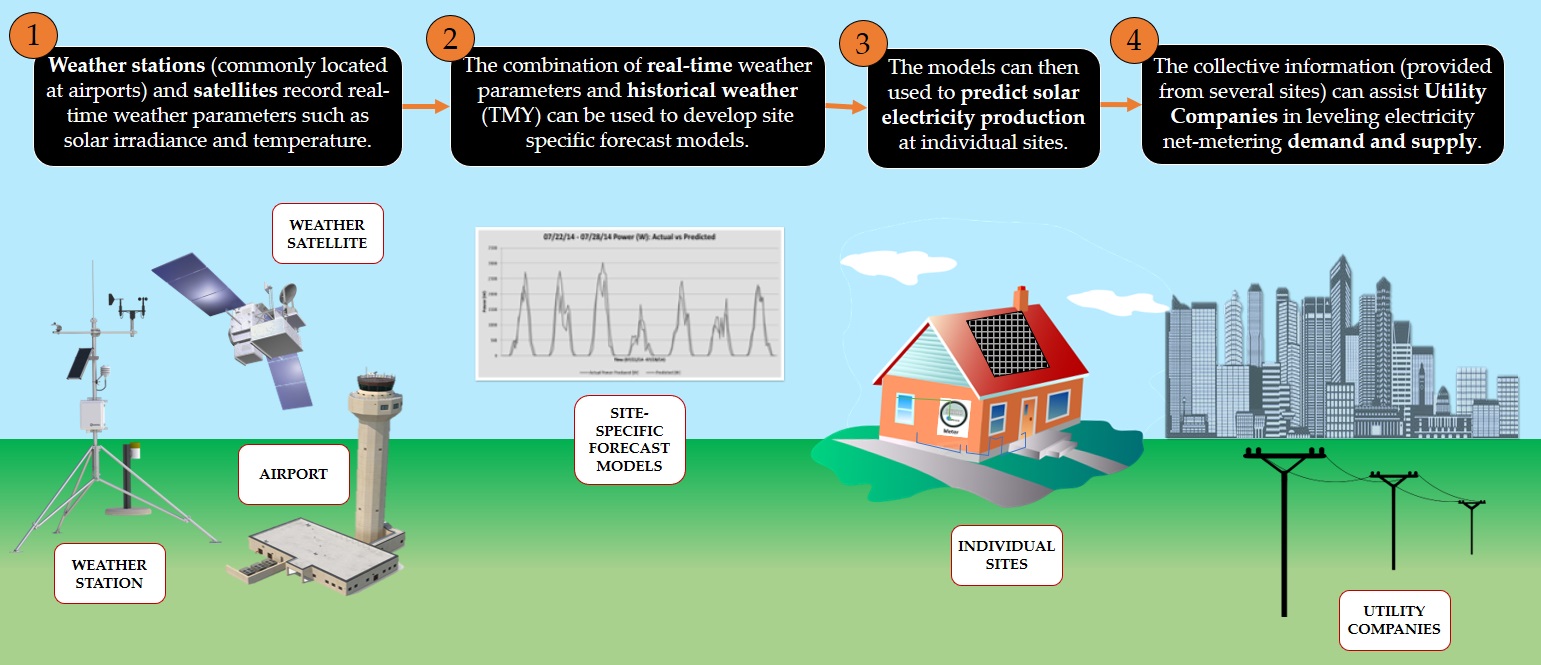Weather data has long helped forecasters predict clouds, rain and storms. Purdue Polytechnic’s Lisa Bosman wants to flip the script, enabling utility companies and solar energy system owners to predict when and where to expect sunshine and the resulting increase in solar energy generation.
 “It’s not just about how blue the sky will be,” said Bosman, an assistant professor who earned a Ph.D. in industrial engineering. “It’s also about determining electricity production and consumption.”
“It’s not just about how blue the sky will be,” said Bosman, an assistant professor who earned a Ph.D. in industrial engineering. “It’s also about determining electricity production and consumption.”
Bosman is researching how to combine weather data with other publicly available datasets, with a goal of improving the responsiveness and efficiency of the nation’s electrical grid through better solar power production forecasting. Utility companies often face challenges meeting demand during heat-wave summers and deep-freeze winters.
“The solar energy forecasting and optimization models available to utility companies about the day-to-day impact of solar power on the grid are currently limited,” said Bosman. “By determining how the available data can be used to estimate solar power generation, we hope to help grid management decision-makers more properly respond to extreme weather conditions, in addition to the peaks and valleys of energy usage.”
Real-time atmospheric conditions are monitored by government agencies, airports and broadcasters. Current weather information is also “crowd-sourced” by private citizens using Internet-connected devices installed at their homes. Additionally, data is collected by satellites operated by NOAA (National Oceanic and Atmospheric Administration) and NASA (National Aeronautics and Space Administration). Data from these various weather stations is aggregated and made available to the public.
Bosman’s research team is working on methods to connect that real-time information with historical weather data from the National Renewable Energy Laboratory (NREL), the U.S. Department of Energy’s primary national laboratory for renewable energy and energy efficiency research and development. NREL produces a dataset called the Typical Meteorological Year (TMY), which provides hourly values of solar radiation and meteorological elements for a typical year. NREL’s TMY data can be used to determine climate conditions that may be considered typical for specific locations over much longer periods of time.

To produce the TMY datasets, NREL has taken weather station data from the last 50 to 100 years, averaged it, and found months that most closely represent the average, explained Bosman. The research aims to combine that data with current data from local weather stations throughout the country to predict the temperature and the availability of solar radiation at specific sites, whether those sites are close by or far away from the real-time data sources.
“Using that info, we will calculate potential grid disturbances stemming from behind-the-meter solar energy systems,” Bosman said. “If we can predict near-future solar energy generation, we can help utility companies determine whether they’ll have a shortage or an excess of power.”
 Although utility companies often produce electricity using a combination of fossil fuels and renewable energy sources, some homeowners and businesses produce solar- or wind-based power on site, behind the meter. Although net metering laws vary by state, they generally require utility companies to purchase excess power produced by consumers’ photovoltaic panels. As a result, Bosman’s research could also help utility companies reduce fossil fuel usage when more solar energy will be available to the grid.
Although utility companies often produce electricity using a combination of fossil fuels and renewable energy sources, some homeowners and businesses produce solar- or wind-based power on site, behind the meter. Although net metering laws vary by state, they generally require utility companies to purchase excess power produced by consumers’ photovoltaic panels. As a result, Bosman’s research could also help utility companies reduce fossil fuel usage when more solar energy will be available to the grid.
“Our main goal is to help level out supply and demand,” said Bosman.
Bosman is collaborating with Bill Hutzel, professor of mechanical engineering technology, and Jason Ostanek, assistant professor of engineering technology. The research team also includes both undergraduate and graduate students. Their current project is an extension of research that Bosman undertook for her doctoral dissertation.
“My dissertation research focused on developing a ‘Kelley Blue Book’ for used solar panels,” she said. “Solar panels add value to homes that are on the market, which helps real-estate agents develop accurate home sale listings. Additionally, knowing the value of those panels helps insurance companies when the panels are damaged by fire or during storms.”
